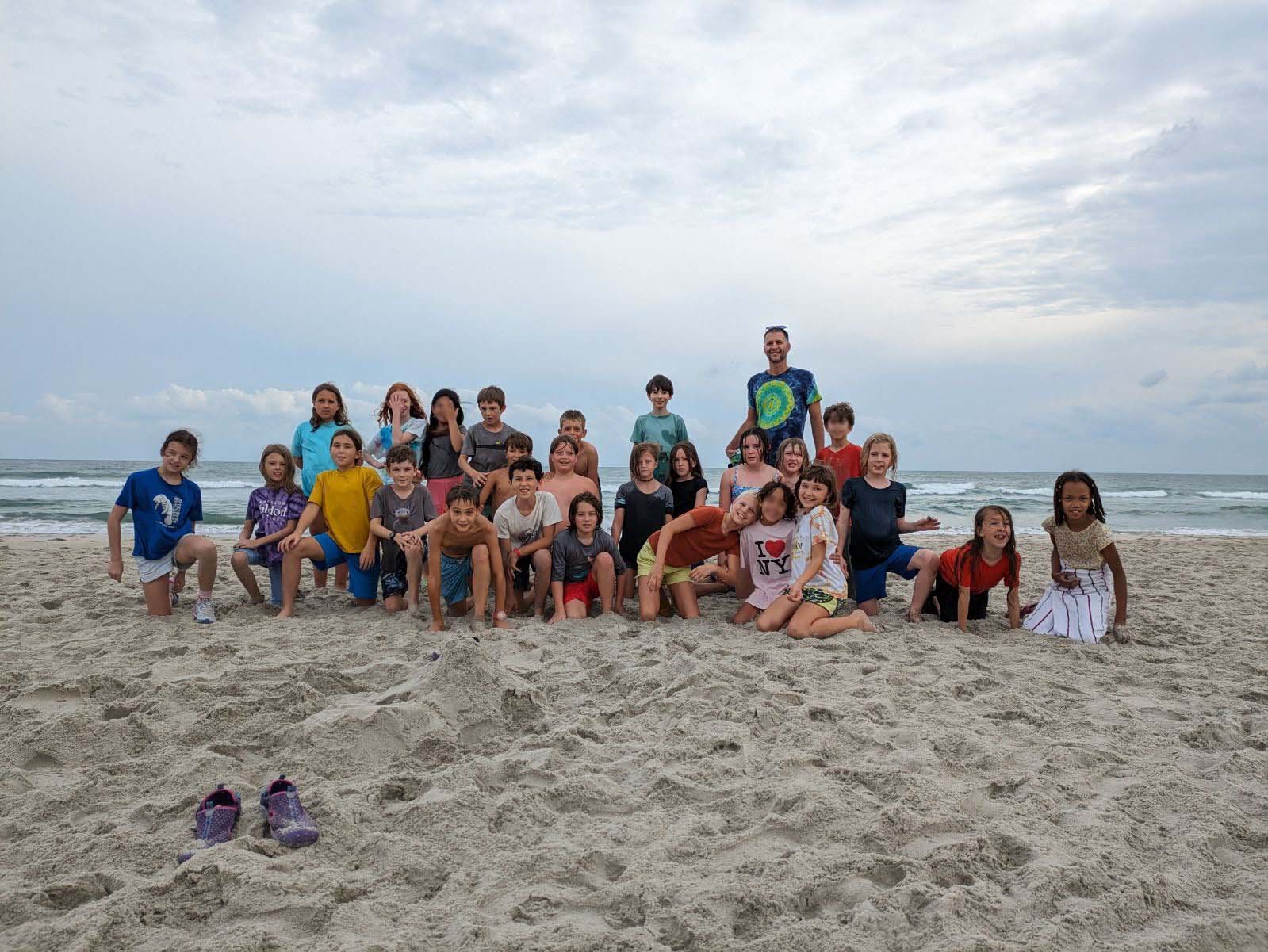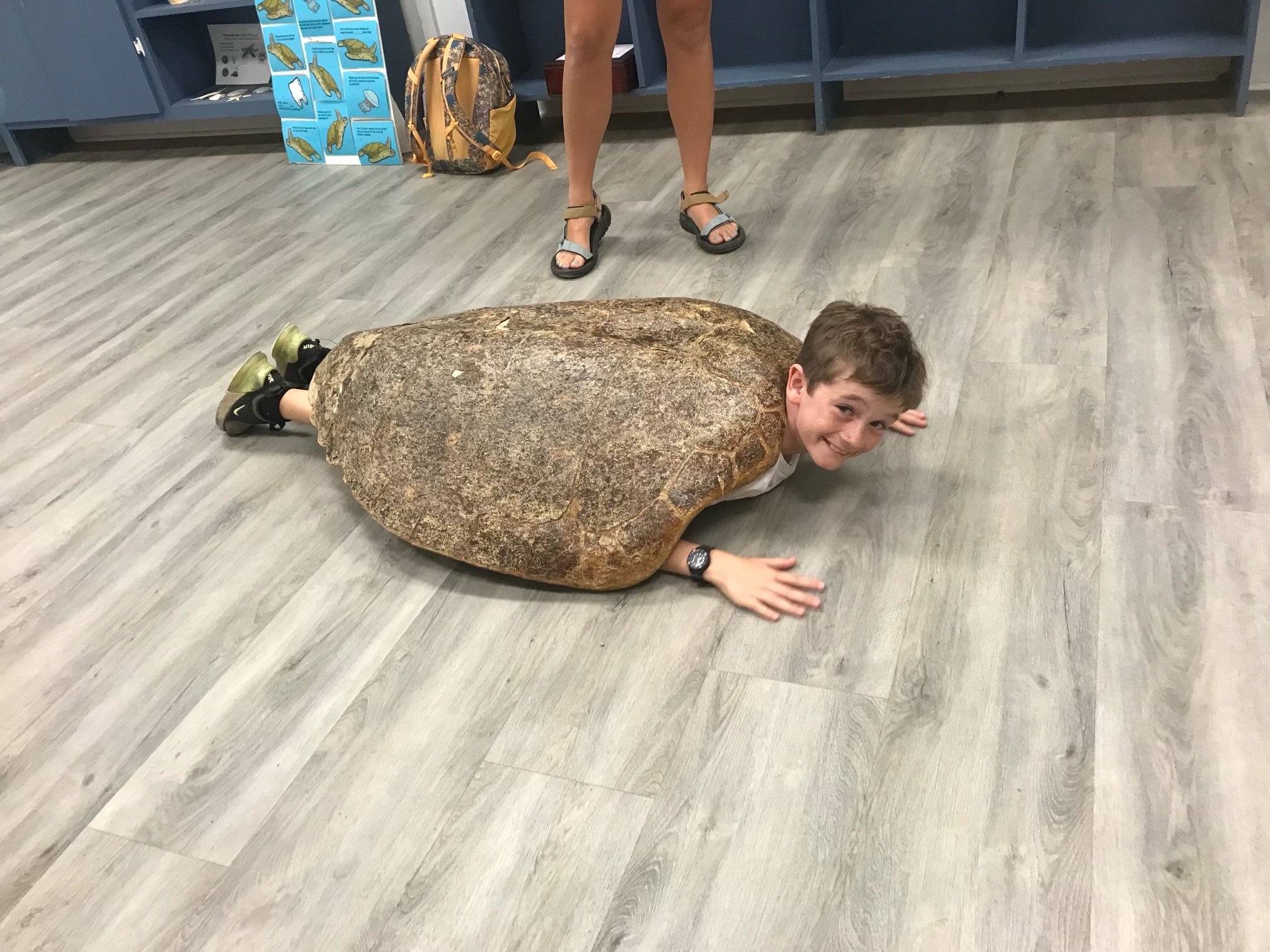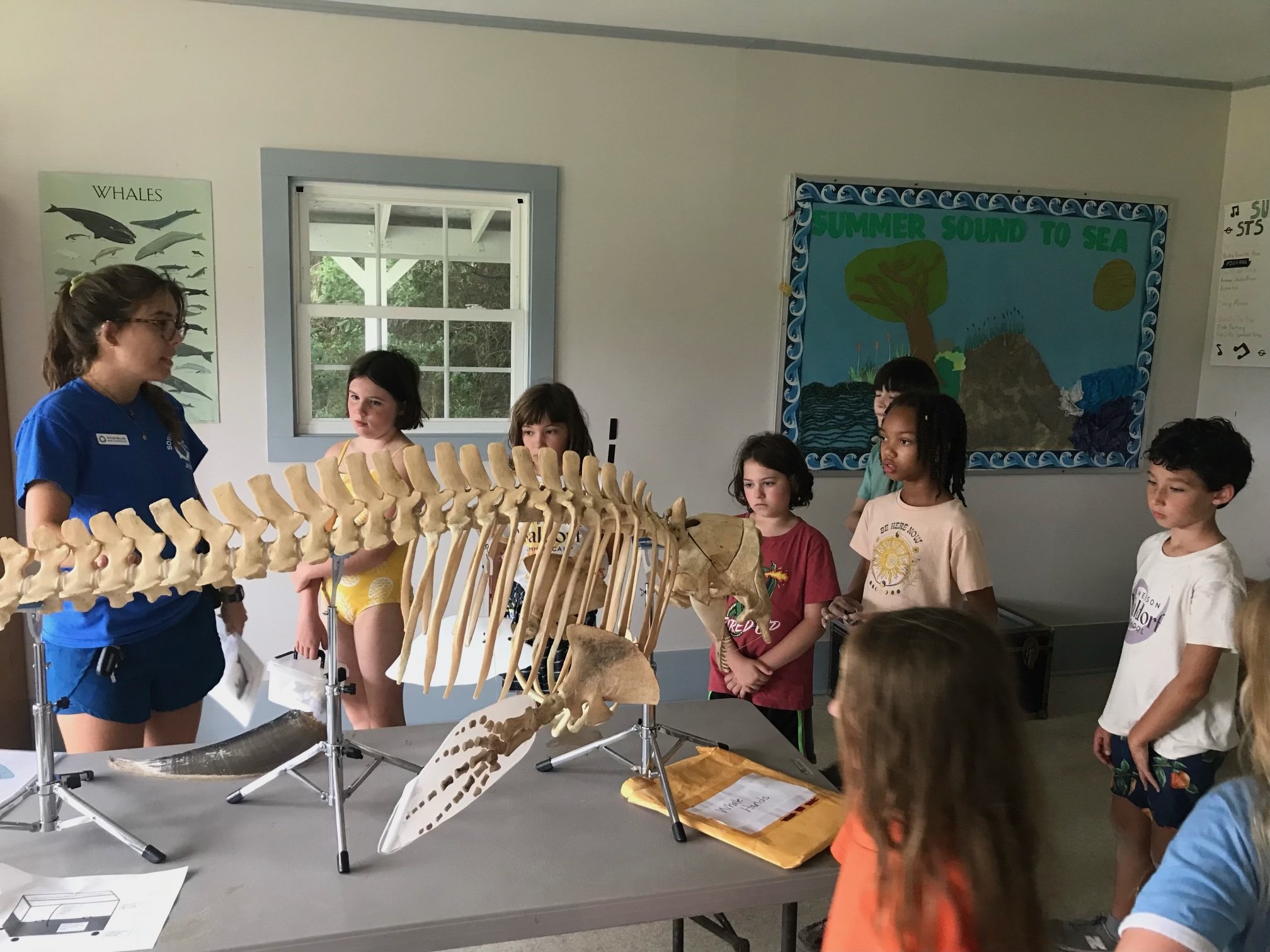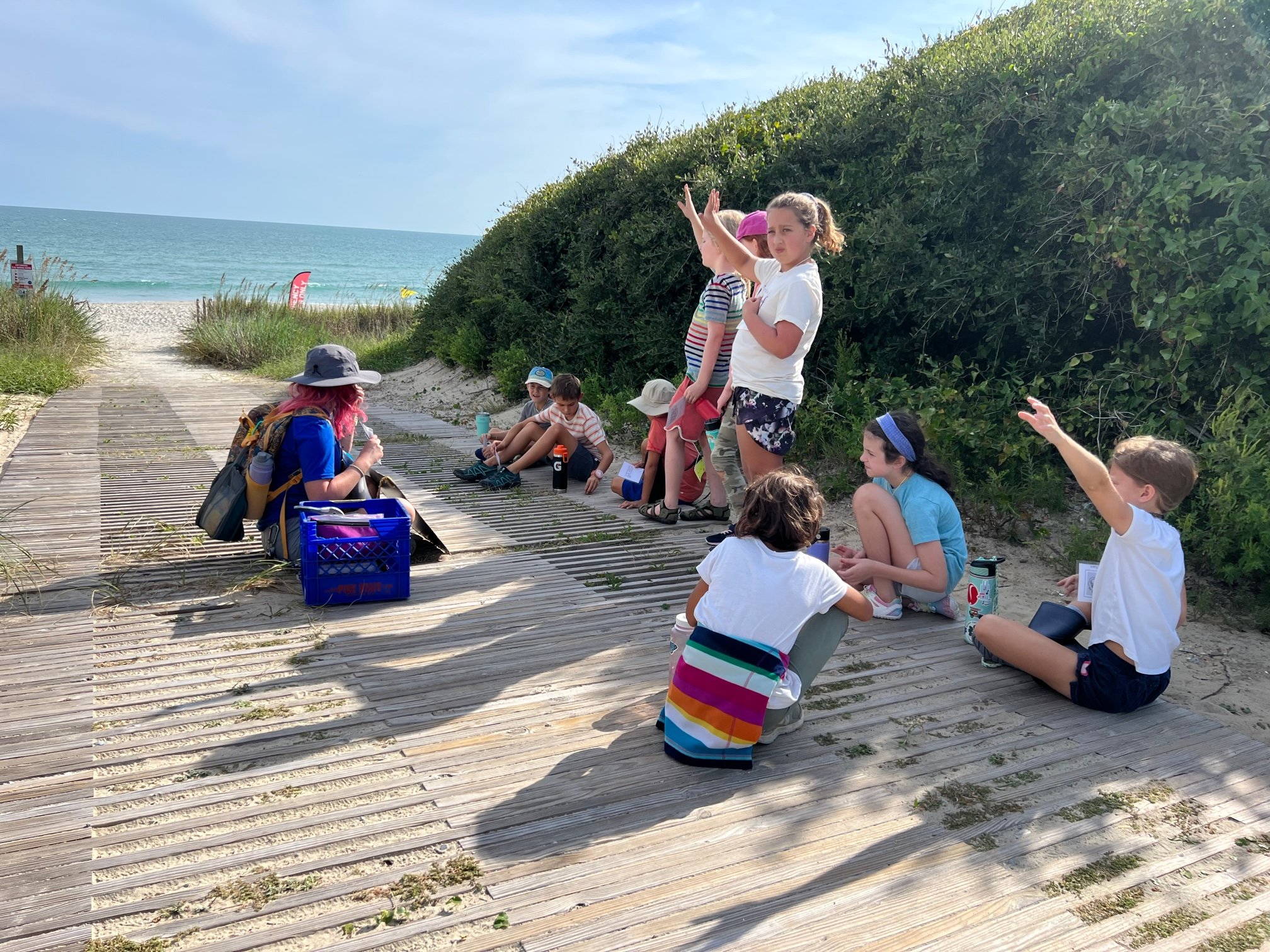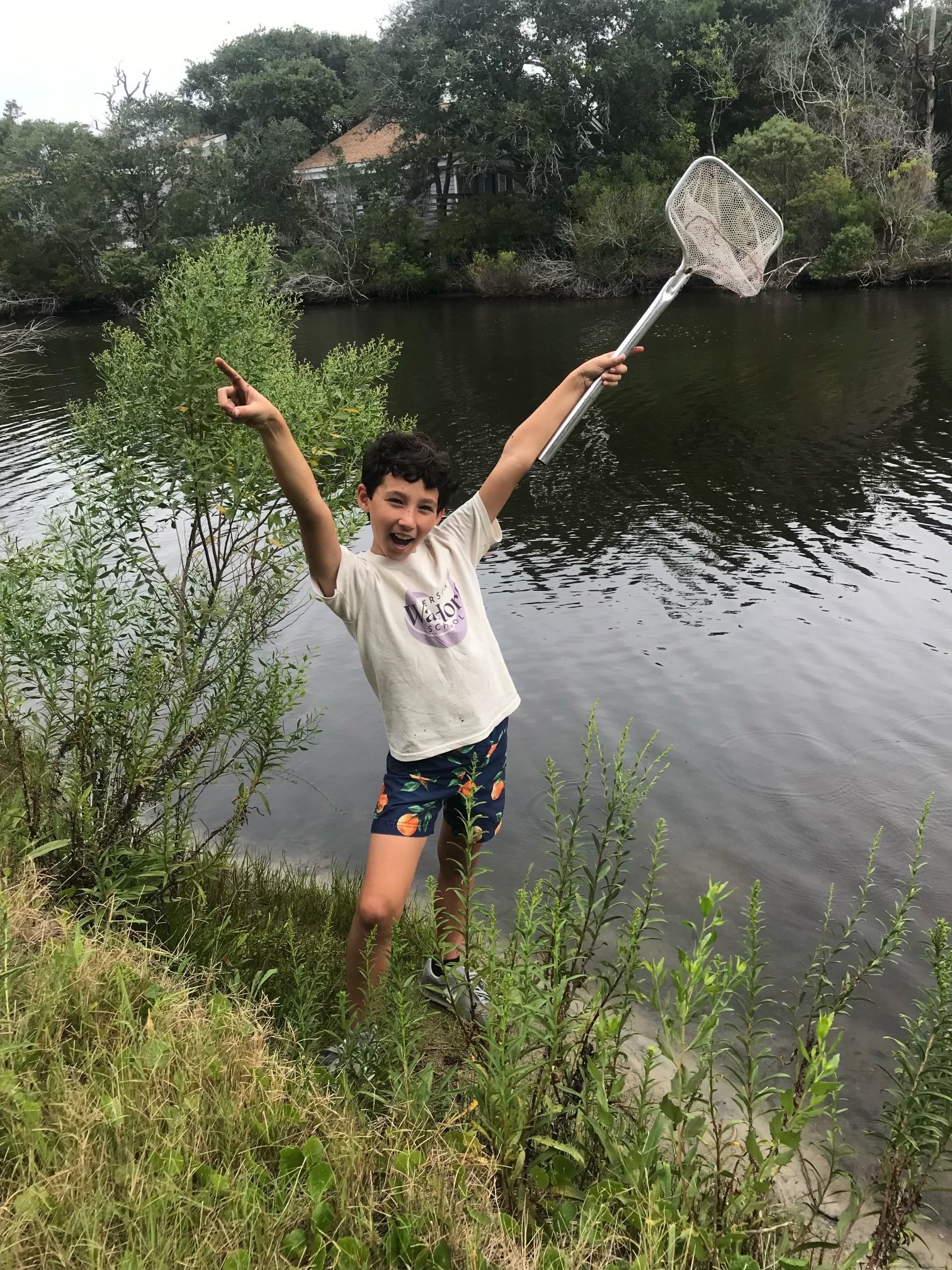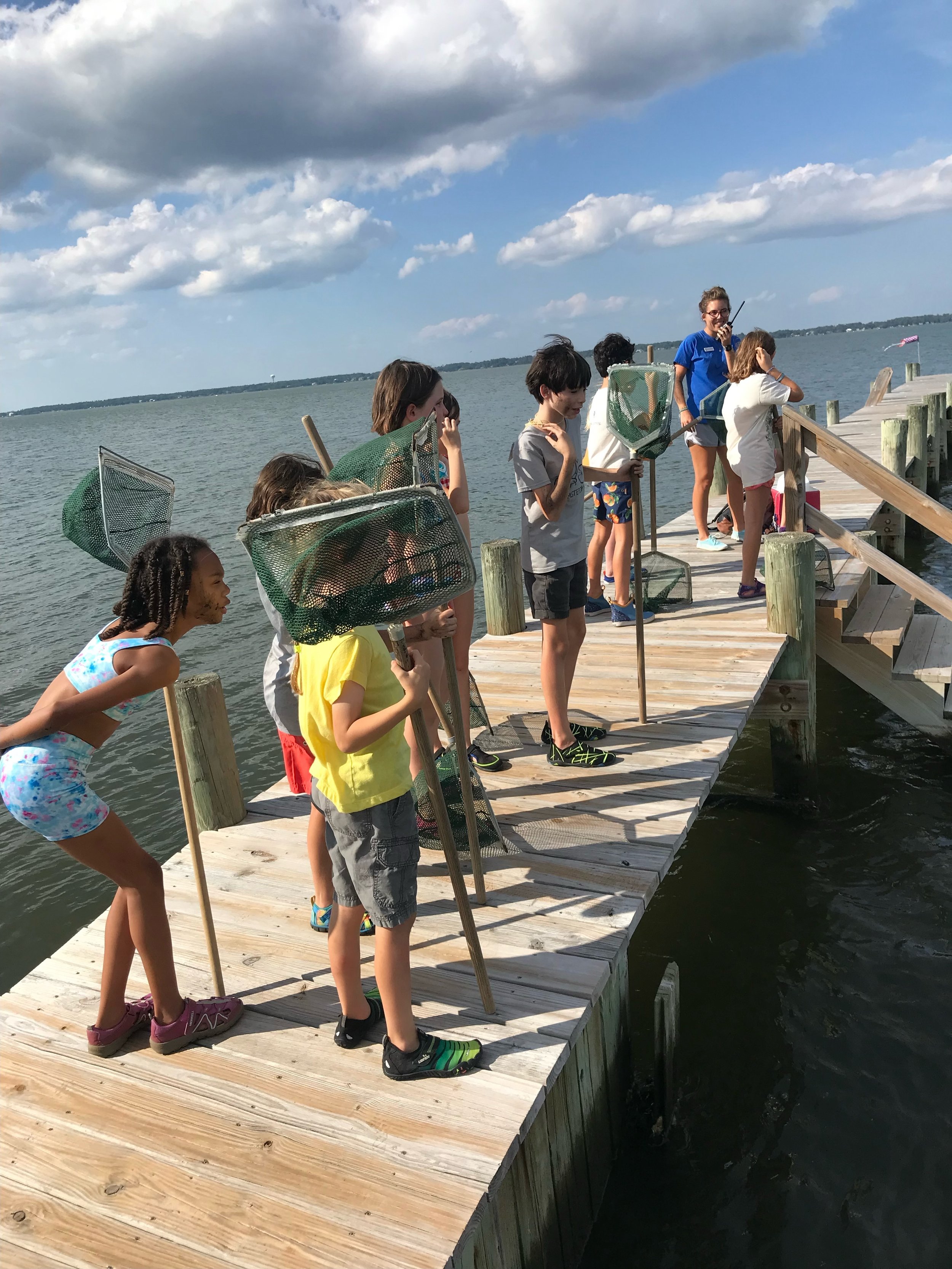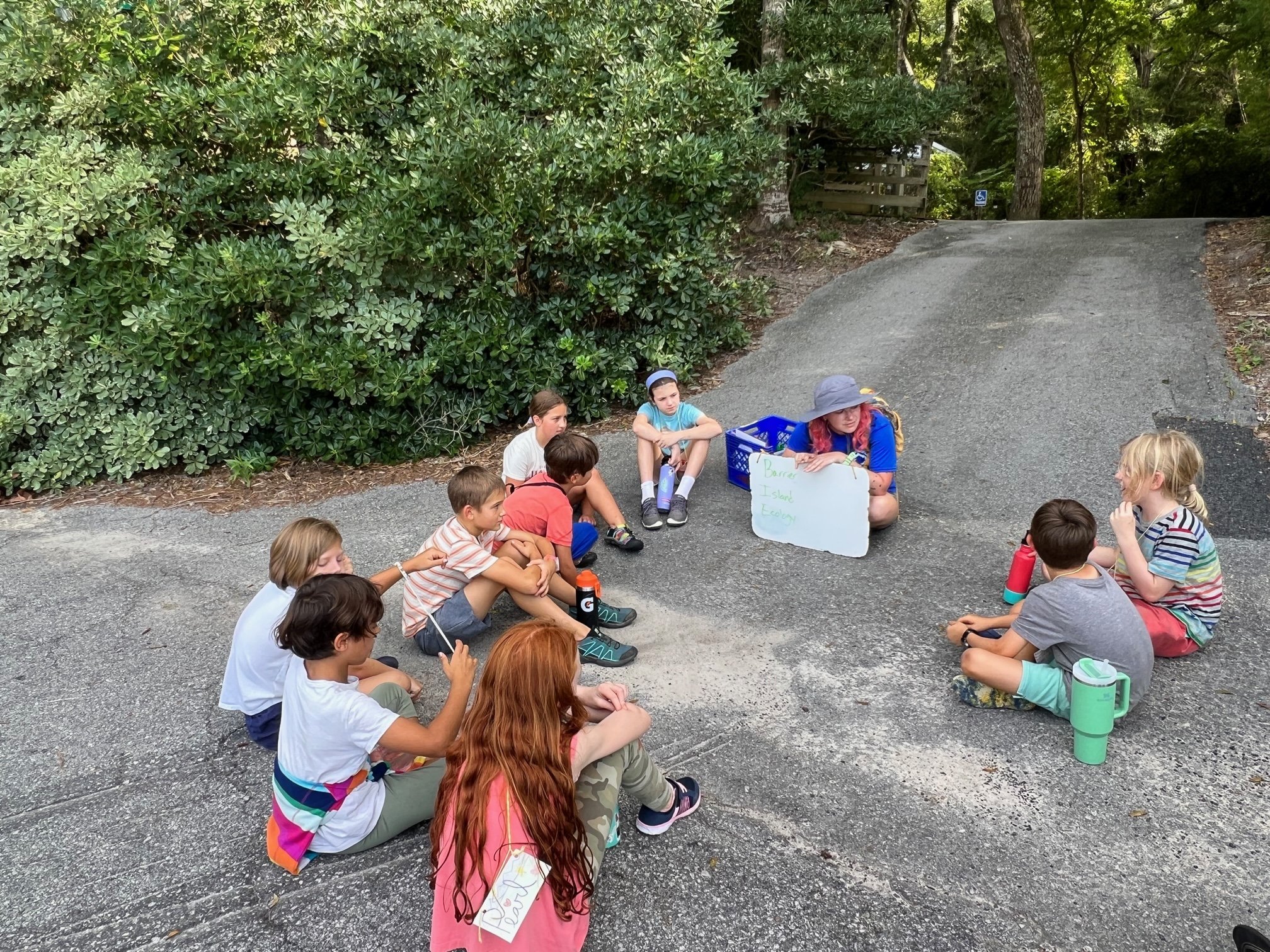4th Grade Sound to Sea Program
Here at Emerson Waldorf School, we strive to provide a holistic education that connects the hands, hearts, and minds of the students that are entrusted into our care. A Waldorf education is vastly experiential where the sense of wonder inspires our students to observe and make sense of the natural world around them. Social and environmental responsibility are highly valued so that when our scholars reach adulthood, they engage in moral standards to care for each other and the environment. In many educational settings these themes become buzzwords that are tossed around without much thought. However, at EWS we intentionally plan our curriculum, lessons, festivals, and field trips to align what we do with what we say. This intentionality was fully embodied as the fourth graders adventured to the Outer Banks to learn about coastal North Carolina as a part of their local Geography studies.
Developmentally, fourth graders are coming out of the other side of the nine-year change. They are beginning to experience the world in a different way. The naive acceptance of the world is now being more critically examined. The children are now standing on their own two feet, which can sometimes become overwhelming. Within the fourth grade year, one goal is to help the students to reorient themselves in a way that assists in establishing their newly found roots into their immediate environment. This is where local geography and learning about the great state of North Carolina comes into fruition.
After orienting themselves to the hyperlocal environments of their homes, neighborhoods, classroom, school campus, the fourth graders learned about the physical geography of the three regions of North Carolina (Coast, Piedmont, Mountains). They examined some of the indigenous people that inhabited this land prior to colonization and creation of the current political maps we see today. As the sun peeked over the treetops of our beautiful 54-acre campus, two buses and several cars full of fourth graders, teachers, chaperones, and all their gear embarked on a journey east toward the rising sun. As we traveled the students not only sang to songs and played games, but they also observed. They saw how the rolling hills of central North Carolina began to flatten out. During our rest stops, the students noticed how the earth began to change from a dense clay to a sandy soil. As we reached the coast, the children pointed out the Bogue Sound and its inhabitants including seagulls, cormorants, and ospreys, while finding interest in possible choices for their animal projects that will come later in the school year. Inspiration was found all around.
Excitement filled the air throughout the next two and a half days we spent on Bogue Island, about seven miles south of Atlantic Beach, NC. Within the 60-acre property of the Trinity Center, the Sound to Sea program in Pine Knoll Shores, NC is home to 5 natural ecosystems including the salt marsh, maritime forest, freshwater pond, ocean, and sound. The students worked in many collaborative ways, constructing their own views of environmental education and how they are connected to this natural land and seascape.
From early morning until bedtime, the students participated in activities that reached all of their senses. They waded into the sound to collect and examine various organisms including clams, oysters, shrimp, hermit crabs and water snails. Did you know that you can hum to a water snail that is deep in its shell, it will come out of its shell? That didn’t work out so well for me, but most of the students had the right touch and humming voice.
Each group took turns with their instructor to learn about these various ecosystems. While in the freshwater pond, the marsh mud became a favorite of the students, the fiddler crabs, and blue crabs. So much excitement was had that one of our students' feet and shoes became lodged in the marsh mud. After helping him out of the mud, his feet came out, but his shoes remained, eventually being dug out by one the the Sound to Sea Instructors.
While on the beach, the students became sea turtles at night, trying to make their way from the ocean to the dunes to lay their eggs and back. In the classroom students dissected squid while learning about their adaptations, tried on real sea turtle shells, crawled through a special fishing net that helps release trapped sea turtles, examined the many reasons why it is important to take care of mother earth and all its inhabitants, and much more. Finally, on our second night, the class even learned about whales while sitting inside the belly of a giant, life-size replica of a whale.
What a great experience this was for our fourth-graders! But as the saying goes, “All good things must come to an end.” Our trip had to be cut slightly short as the students experienced an early taste of what the warm coastal waters of September can create. Teachers and chaperones kept a close eye on the weather as Tropical Storm Ophelia was brewing just off of the Emerald Coast of which we were staying. As the first rains and winds began to take hold of this barrier island, we “escaped” back to the safety and security of the Piedmont, Chapel Hill, EWS, and eventually our homes and another 12 hours of dry weather before the storm reached our region. Their feet were firmly planted back on the clay soil with knowledge and inspiration that will lead into years of environmental justice practices ahead. This was an adventure that the class of 2032 will never forget!
Andrew Hubbuch, 4th Grade Teacher

